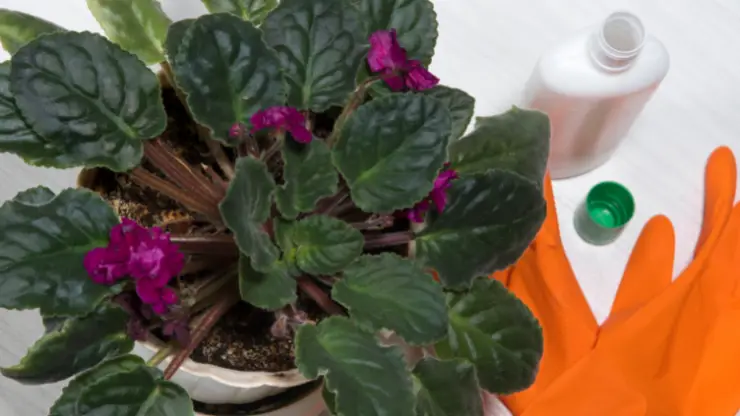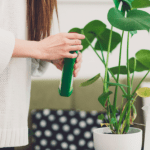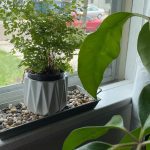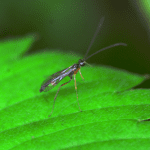
In a recent post, I covered everything you should know about fertilizing indoor plants in winter. But spring is coming up fast, and it’s time to start thinking about your new-season plant care tasks. Resuming regular feeding should be at the top of your list.
Today, we’ll look at exactly when to start fertilizing houseplants in spring. As days get longer and temperatures get warmer, your plants need extra nutrients to support new growth. You don’t want to start too early, but you might want to resume feeding earlier than you think!
When to Start Fertilizing Houseplants in Spring
Houseplants should be fertilized when they are actively producing new growth. For most plants, this is in the spring through fall, when light levels are higher. But how do you know exactly when to start fertilizing houseplants in spring?
As a general rule, start fertilizing houseplants in late March after daylight savings time (if you live in an area that observes this practice). If you don’t live in an area that observes daylight savings, start fertilizing your plants around the last week of March.
The idea is to wait until the days naturally get longer, as the extra light is what stimulates your houseplants to enter active growth again. There are some exceptions to this rule, however. Following are some tips to keep in mind:
- Re-potting – If your plant needs to be re-potted, the best time is in early spring – just before new growth begins (before daylight savings). But do not feed before re-potting. If your potting mix contains fertilizer, don’t feed for six weeks after re-potting. If your soil doesn’t contain fertilizer, wait at least a week before feeding.
- Artificial Lights – If you grow houseplants under artificial plants lights through winter, they should be fertilized all year long. They don’t enter a dormant period since they are receiving the same amount of light, so they need the same amount of nutrients all year. See my post on fertilizing indoor plants in winter for more information on this.
- Increasing Fertilizer – Some houseplants need feeding all year, but require an increase in fertilizer starting in spring. Always check your individual plant’s care guide for specific recommendations. If your plant does need increased fertilizer in spring, follow the daylight savings rule (increase AFTER daylight savings in late March).
Best Fertilizer for Indoor Plants in Spring
Now that you know when to start fertilizing houseplants in winter, consider what type of fertilizer to use. Investing a few extra bucks in a high-quality plant food goes a long way towards increasing the health of your plants. Here are my favorites (by plant type):
- Jack’s All-Purpose Plant Food – This is a great all-purpose fertilizer to use on all your houseplants. It works great on foliage plants and flowering plants alike. This was my absolute favorite for years before I started using the blossom booster and houseplant special more often (see below).
- Jack’s Blossom Booster – I use Jack’s Blossom Booster on my flowering houseplants. It has a 1:3:2 nutrient formula that’s been proven to produce more flowers and brighter colors on all indoor and outdoor plants. My indoor begonias and African violets love it!

- Jack’s Houseplant Special – This one is the absolute best for foliage plants. It has high nitrogen, so it encourages growth of strong roots and lots of healthy leaves. It releases nutrients gradually for months of vigorous growth.
Read my review of Jack’s Fertilizer to see why I love it so much! It’s truly the best houseplant fertilizer on the market in my opinion (and I’ve tried almost all of them). Jack’s is the best fertilizer to use in Spring – and all other seasons as well.
Fertilizing Houseplants 101
Every houseplant grower should know the basics of houseplant fertilizing. It’s a basic routine that you’ll need to keep your plants happy and healthy for years to come. Here are some tips that I consider must-have knowledge:
- Feed plants when the soil is moist. Plants that are already stressed from dry soil conditions may take up more nutrients than they need if you fertilize them before they have a chance to hydrate. Water your plant thoroughly first, wait a few hours (or even a day), and then apply fertilizer.
- Do not fertilize newly purchased plants for six weeks. When you bring a new plant home, it most likely already has some fertilizer in the soil. It’s also adjusting to new conditions, which is stressful enough without the pressure to produce new growth.
- Do not fertilize plants after re-potting for six weeks. Plants usually need no feeding for a while after being re-potted into fresh potting soil. Most potting soils include a bit of starter fertilizer, and it’s best to allow plants to use these nutrients before adding more.
- Feed plants while they are actively growing. Active growth usually begins in spring and slows down in winter. Exceptions include winter-blooming plants like rieger begonia or plants grown under plant lights. Always check your plant’s individual care requirements. As a general rule, most plants can go without fertilizer in winter.
Related Questions
Here are some frequently asked questions related to “when to start fertilizing houseplants in spring” that you might find helpful (plus my answers to them).
Can I Start Fertilizing Houseplants in March?
Yes. In fact, late March after daylight savings time begins is the best time to start fertilizing houseplants in spring. If you live in an area that doesn’t observe daylight savings, I recommend starting to ramp up your fertilization in the last week of March. The longer days and increased light stimulate your plants to start actively growing again after their winter rest.
How Often Should You Fertilize Houseplants in Spring?
Although it depends on the type of plant, as a general rule you can feed most houseplants about once a month beginning in spring through fall. Use a high-quality houseplant fertilizer according to the manufacturer’s instructions. Of course, some plants need more frequent feeding, so make sure to read your specific plant’s care requirements.




